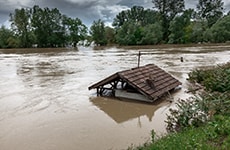Texas

- State Population: 30,029,572
- Local Health Departments: 65
- Frequent Public Health Emergencies: Tornadoes, Flooding, Wildfires
- Key Emergency Operations Center Activations: 2020: COVID-19 Pandemic
- CDC PHEP Funding:
FY 2022: $42,270,242
FY 2021: $40,952,164
FY 2020: $39,129,703 - Public Health Crisis Response Funding
Mpox 2022 funding: $1,065,893 – (does not include $150,000 awarded to Houston County; does not include $150,000 awarded to Harris County; does not include $284,730 awarded to Bexar County; does not include $271,628 awarded to Travis County; does not include $488,933 awarded to Dallas County)
COVID-19 2021 funding: $157,015,371
COVID-19 2020 funding: $55,066,699
- Epidemiologists: 39
- Laboratorians: 5
- Nurses: 3
- Planners: 5
- Other: 55*
*Includes IT specialists, administrative staff, statisticians, and other positions
1 Career Epidemiology Field Officer
- Community Preparedness
- Medical Countermeasure Dispensing and Distribution
- Public Health Laboratory Testing
- Public Health Surveillance and Epidemiologic Investigation
- Information Sharing

In Texas, PHEP supports staff and resources that address the medical needs of populations with special needs affected by an incident and monitor their health for the duration of a response. In August 2017, Hurricane Harvey unleashed more than 50 inches of rain on the Houston area, flooding 136,000 homes and leaving 61,064 people stranded. The Harris County Health Department used PHEP funds to open a shelter for patients who required specialized medical support. The state also supported this shelter with PHEP program assets including cots, a nursing station, and medical supplies.

In April and May of 2016, a record-setting 16.5 inches of rain caused the Brazos River in southeastern Texas to flood, devastating Fort Bend County. Residents who need special assistance to evacuate would have been stranded, except local health officials had already established a program under PHEP, Enable Fort Bend, to identify and register these residents. As a result, about 780 residents were safely evacuated.